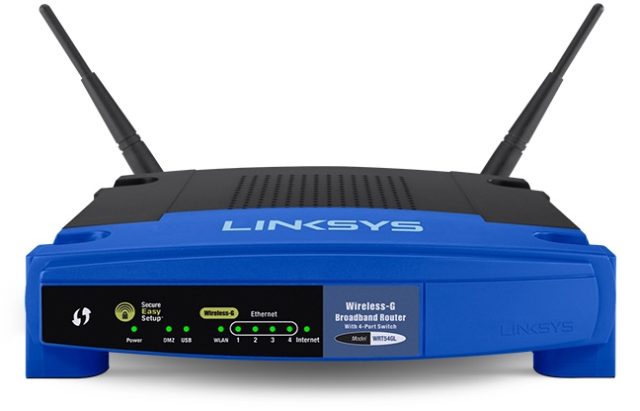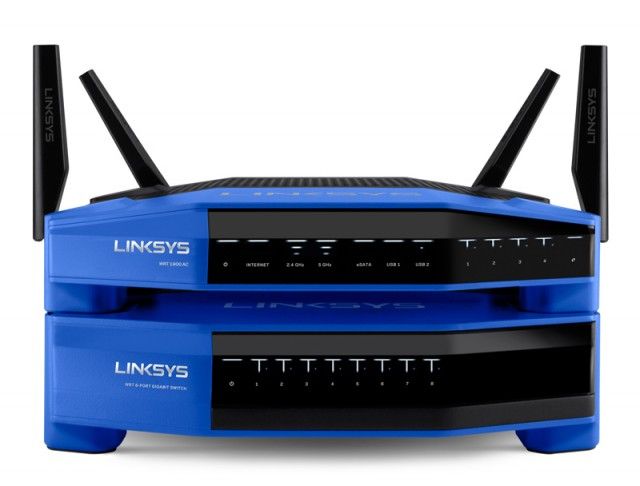
In a time when consumers routinely replace gadgets with new models after just two or three years, some products stand out for being built to last.
Witness the Linksys WRT54GL, the famous wireless router that came out in 2005 and is still for sale. At first glance, there seems to be little reason to buy the WRT54GL in the year 2016. It uses the 802.11g Wi-Fi standard, which has been surpassed by 802.11n and 802.11ac. It delivers data over the crowded 2.4GHz frequency band and is limited to speeds of 54Mbps. You can buy a new router—for less money—and get the benefit of modern standards, expansion into the 5GHz band, and data rates more than 20 times higher.
Despite all that, people still buy the WRT54GL in large enough numbers that Linksys continues to earn millions of dollars per year selling an 11-year-old product without ever changing its specs or design.
"To be honest, it somewhat baffles my mind," Linksys Global Product Manager Vince La Duca told Ars. But production won't stop any time soon as long as Linksys' suppliers, including chipmaker Broadcom, keep selling the parts needed to build the WRT54GL. "We'll keep building it because people keep buying it," La Duca said.
Linksys doesn't bother promoting the WRT54GL much. But La Duca mentioned the continued production of the WRT54GL recently when I interviewed him for a story on Linksys' project to let users install open source firmware on new routers without breaking the latest FCC anti-interference rules. A WRT54G was the first wireless router I ever purchased about a decade ago; I was surprised that Linksys still produces them, so I asked the company for more details.
Linksys would not release exact sales figures, but La Duca confirmed that it is still a "multi-million dollar SKU" each year. Linksys sells the WRT54GL for $69.99 on its website. In the UK you can find it at third-party retailers for about £40. At $69.99, Linksys would need to sell 28,576 each year to make $2 million in revenue. They probably sell more than that since it's available for $42.95 on Amazon, and La Duca didn't specify how many millions of dollars the product earns.
The WRT54GL and other routers in the WRT54G line have sold 31 million units in their 14-year lifetime. The WRT54GL is the only one still being manufactured and sold.
Satisfied customers
Why do people buy it? La Duca thinks big factors include the product's reliability, name recognition, and its support of open source firmware to unlock more advanced capabilities. Users can easily replace the Linksys firmware with third-party tools like DD-WRT and OpenWrt, which were originally built for the company’s WRT54G routers more than a decade ago.
"People say, 'I had it, it worked, or a friend had it and it's been working ever since nonstop, so I went and bought one,'" La Duca said. Customers also know they can "quickly throw DD-WRT on there and do hotspots [and] VPNs with them. Even though you can do it on newer stuff, it seems like there is this interesting cult following behind it."
In addition to home customers, small businesses use them to set up Wi-Fi hotspots, he said.
Open source is acknowledged even in the product's name, as the "L" is for "Linux." WRT stands for “Wireless RouTer," while 54 indicates the speed in Mbps and G is for 802.11g.
Customer reviews on Amazon and Linksys' website show that there have been many happy buyers of the hardware even in recent weeks.
"I've had so many of these routers over the years I've lost count," one Amazon buyer wrote on June 18 of this year. "Great work horse routers with stone axe reliability."
"So happy with this product," another wrote on June 19. "I replace[d] my old Linksys that lasted 10 years [with the] same model... and couldn't be happier with my wireless."
One new owner of the WRT54GL bought it because "My computer guy recommended this router." Another recent buyer wrote that he uses the WRT54GL with DD-WRT to provide wireless to customers. "I think we have 20+ of these routers now, all are working great," he wrote.
Another review from a couple of weeks ago said, "This router is a classic and it's gotta say something that they are still making these and selling these for more than 10 years!" The reviewer noted that the WRT54GL isn't "the latest and greatest multiband router with gigabit" speeds but maintained that there are still reasons to buy it.
"I like to see a router with True antennas that you can position, I just don't believe in built in antennas that are basically copper traces on a circuit board," the reviewer wrote. "The WRT54GL has the easy-to-use, familiar settings interface that works great for port forwarding and most needed functions, and you can enhance the capabilities using DD-WRT 3rd-party firmware! I have turned these units into all types of network devices using the 3rd-party firmware that's easy to flash assuming you can follow directions. Overall, a good standard, affordable router for the average user."
The comments show that availability of open source firmware can make old hardware attractive. Linksys itself sells $50 routers that support 802.11ac and its much faster speeds. But modern Linksys routers that support open source are limited to the more expensive WRT1200AC, WRT1900AC, and WRT1900ACS, which range in price on Amazon from about $150 to $210.
While some people are buying the WRT54GL brand new, others report having WRT54GLs that still work after more than a decade.
"I bought mine USED 11 years ago," one person wrote on the Linksys product page. "I can play Xbox Online AND stream media on a smart TV at the same time with no issues. Very impressed my dinosaur has lasted this long and still performs as well as it does. Never had range issues, could share Internet with people in my apartment complex no problem and worked great in a 2-story house with a basement, with router on top floor. I would very much consider buying another one if mine ever dies."
Bill Gates in 1999: “Why don't you just call this a router?”
Karen Sohl was the 41st employee of Linksys, joining the company in 1999. She never left. Sohl originally had a bunch of roles, as is typical at small companies, working in public relations, advertising, and running channel programs. She is now director of global communications for Belkin, which purchased Linksys from Cisco in 2013.
Sohl remembers launching the first WRT54G in December 2002. "That product really is what made the company," she told Ars. Linksys also sold wireless routers using the earlier 802.11b standard that allowed only 11Mbps transmissions, while the WRT54G series products are compatible with both 11b and 11g.
Before Linksys started selling wireless routers, the company sold consumer routers without wireless capability, which could be used to connect a computer and a printer or a couple of computers in a home office. Before selling routers, Linksys offered a home networking kit with a 5-port switch and two LAN cards, but Linksys co-founder Victor Tsao "decided he wanted to take an enterprise-grade router and repurpose it and make a solution for computers to share an Internet connection," Sohl said.
Linksys previewed its first consumer router at the COMDEX computer industry conference in November 1999, before its official launch, but at the time was calling it an "Integrated Internet Hub."
"We were at the show and Bill Gates came by our booth... and he said, 'why don't you guys just call this a router?'" Sohl said.
Linksys changed the product's name, opting for "Broadband EtherFast Router."
La Duca has only been with Linksys for about three years, but his first non-wireless router was a Linksys, which he used to get two PCs in his house connected to the Internet.
"I still have it to this day. It sits on my desk, below the WRT54GL, because it stacks," he said.
When Linksys resurrected the classic blue WRT54G design for its new 802.11ac routers in 2014, it also offered multiple networking products that can stack on top of each other, just as it offered in the WRT54G days.

Source code controversy
The WRT54GL and the modern WRT1900AC series might not exist today if not for a decision made after Cisco bought Linksys in 2003. It started with a bad decision: Cisco replaced the Linux-based firmware with the VxWorks platform, making it very difficult to flash with open source firmware.
After loud protests from customers, Linksys reissued a previous version of the WRT54G near the end of 2005 with the new name, WRT54GL, restoring Linux to its rightful place. There was also a 2008 lawsuit filed against Cisco by the Free Software Foundation (FSF), resulting from Cisco's failure to provide source code. A settlement in 2009 led to Cisco complying with the GPL free software license and making a donation to the FSF.
Though it was a black eye for the company, Sohl said that "what could have been a really awful situation ended up being a positive, because it enabled us to do a lot of learning and get closer to the community."
Linksys' relationship with the open source community remains strong today, with no better example than its recent collaboration with developers of OpenWrt and chipmaker Marvell. The project ensured that open source firmware can continue to be installed on new WRT routers despite FCC rules that led other router makers to prevent loading of third-party firmware.
The new FCC rules affect only the 5GHz band, so the WRT54GL didn't need to be modified. But the WRT54GL still gets occasional software updates from Linksys. The most recent firmware update came out in January of this year to "address a manufacturing issue... [that] does not affect end users." Another firmware update in July 2015 fixed several security vulnerabilities.
Linksys also offers support and a one-year warranty on new purchases of the WRT54GL, just as it does with its other products. "If you were to buy a 54GL today and you needed help setting it up, you could call our tech support and they'd help you set it up," La Duca said.

reader comments
146